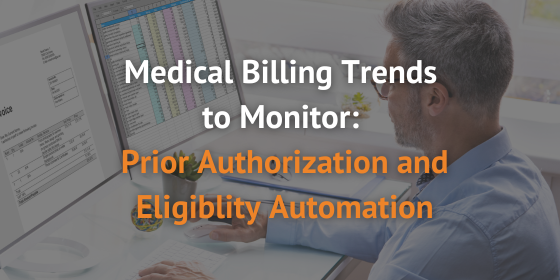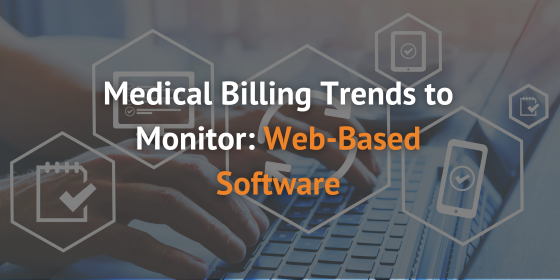
Medical Billing Trends to Monitor: Prior Authorization and Eligibility Automation
Automation of both eligibility and prior authorizations are having a considerable impact on the world of healthcare. The simplification of these processes has made life a lot easier for both patients and practices alike. Let’s discuss some of the most significant impacts of the trend of automation when it comes to eligibility and prior authorizations.
1. Improved Efficiency
The eligibility process has been made considerably easier by the automation of some of its more arduous aspects.This means less paperwork and phone calls, and less human error. Of course, anything automated is not only going to get done faster, but be free of pesky human errors that plague any manual process. Automated systems verify coverage upfront, allowing providers to bill more accurately and promptly, resulting in faster reimbursement, improved cash flow, and more efficient billing process.
Additionally, many eligibility automation systems can often be integrated with existing electronic health records (EHR) or your practice management system. This integration eliminates the need for duplicate data entry, improves data accuracy, and ensures seamless information flow across different processes and departments.
Automated eligibility also makes life easier for your patients, as you can provide them with more accurate information about their insurance coverage upfront. This enables your patients to make informed decisions about their healthcare and avoid unexpected financial burdens that may decrease collections and damage your revenue cycle.
In terms of authorizations, ePA systems can almost completely automate the prior authorization process, eliminating the need for manual paperwork and phone calls. ePA systems also facilitate real-time communication between healthcare providers and insurance companies. This allows for quicker processing and response times, resulting in faster approval or denial decisions. Implementing electronic prior authorization enables you to operate more nimbly than your peers. However, it is important to note that not all insurance companies have fully adopted electronic prior authorization, so although you shouldn’t completely abandon manual processes for now. Some aspects of the process like case review will remain human for now, but don’t expect the trend of automation to go away anytime soon.
2. Reduction In Claims Denials
Although we touched on it in the first section, automating eligibility and prior authorizations helps save your practice from costly claim denials, and makes your billing process more frictionless.
Automated eligibility checks can be performed in real-time, allowing medical providers to quickly verify insurance coverage before providing services. This helps avoid denied claims and facilitates faster reimbursement for services rendered.
ePA systems help minimize denials and billing errors by improving the accuracy and completeness of prior authorization requests. Your electronic prior authorization platform can incorporate validation checks, ensuring that all required information is included before submission, increasing the chances of successful authorization and reimbursement.
3. Reduced Administrative Burden
Technology has made it easier to access and compare healthcare prices. Healthcare price transparency tools, such as online databases and apps, allow patients to compare prices across different providers and make more informed healthcare decisions.
In addition to decreasing time spent on manual tasks in the prior authorization process, electronic prior authorization eliminates the need for printing, mailing, and storing paper documents associated with prior authorization requests, reducing clutter and helping your practice become paperless. If you are looking to maximize your practice’s efficiency, you should certainly look into automating the prior authorization process.
Automating eligibility verification and prior authorization can help take your practice to the next level. To do so, you’ll need some great clearinghouse partners in your corner. We work with TriZetto Provider Solutions, Waystar, and Claim M.D, in particular.
Automating eligibility verification and prior authorization can help take your practice to the next level. To do so, you’ll need some great clearinghouse partners in your corner. We work with TriZetto Provider Solutions, Waystar, and Claim M.D, in particular.
If you are looking for a way to improve your practice’s revenue cycle management and make your billing process more efficient, EZClaim can help. Our industry-leading medical billing software has everything you need, and nothing you don’t: all to make the billing process as simple as possible. If you are interested, we encourage you to schedule a free demonstration to learn more! If you want to pursue automating the eligibility verification process, we have some outstanding partners who can help you in that journey.





